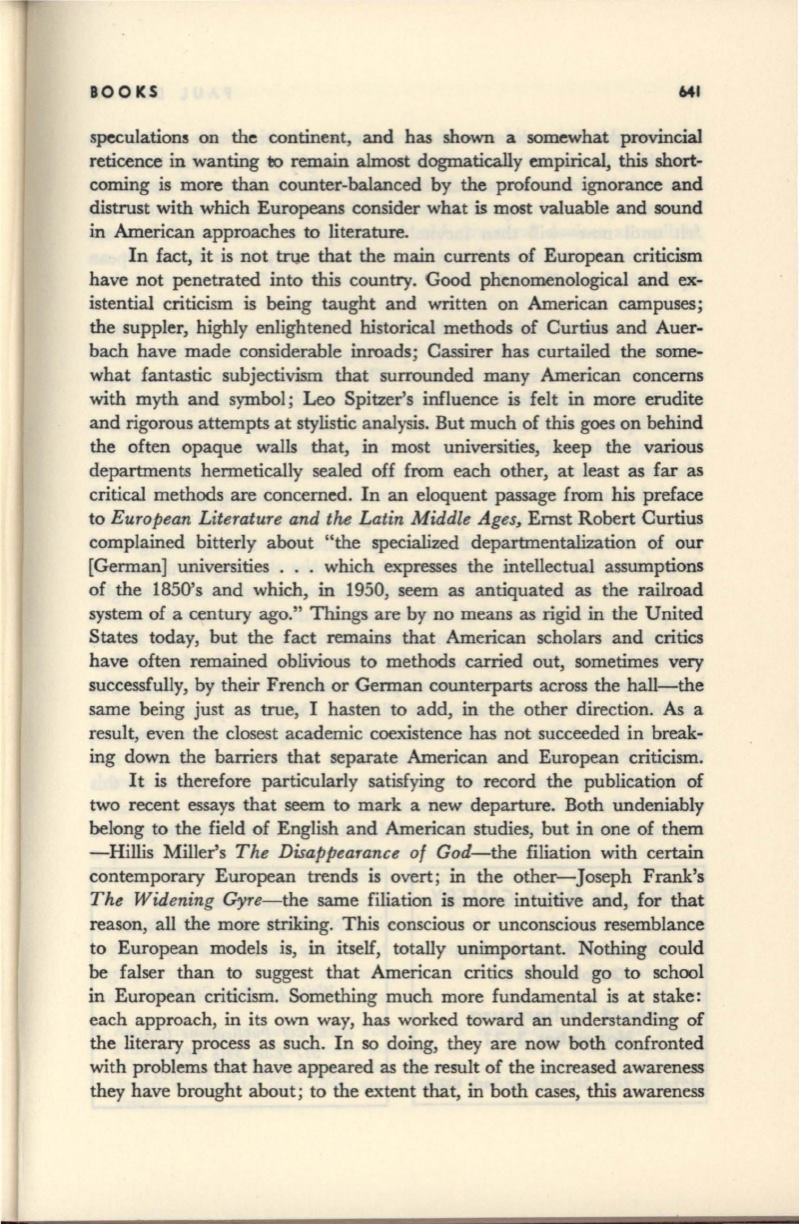

BOOKS
641
speculations on the continent, and has shown a somewhat provincial
reticence in wanting
to
remain almost dogmatically empirical,
this
short–
coming is more than counter-balanced by the profound ignorance and
distrust with which Europeans consider what
is
most valuable and sound
in American approaches to literature.
In fact, it is not trqe that the main currents of European criticism
have not penetrated into this country. Good phenomenological and ex–
istential criticism is being taught and written on American campuses;
the suppler, highly enlightened historical methods of Curtius and Auer–
bach have made considerable inroads; Cassirer has curtailed the some–
what fantastic subjectivism that surrounded many American concerns
with myth and symbol; Leo Spitzer's influence is felt in more erudite
and rigorous attempts at stylistic analysis. But much of this goes on behind
the often opaque walls that, in most universities, keep the various
departments hermetically sealed off from each other, at least as far as
critical methods are concerned. In an eloquent passage from his preface
to
European Literature and the Latin Middle Ages,
Ernst Robert Curtius
complained bitterly about "the specialized departmentalization of our
[German] universities . . . which expresses the intellectual assumptions
of the 1850's and which, in 1950, seem as antiquated as the railroad
system of a century ago." Things are by no means as rigid in the United
States today, but the fact remains that American scholars and critics
have often remained oblivious to methods carried out, sometimes very
successfully, by their French or German counterparts across the hall-the
same being just as true, I hasten to add, in the other direction. As a
result, even the closest academic coexistence has not succeeded in break–
ing down the barriers that separate American and European criticism.
It is therefore particularly satisfying to record the publication of
two recent essays that seem to mark a new departure. Both undeniably
belong to the field of English and American studies, but in one of them
-Hillis Miller's
The Disappearance of God-the
filiation with certain
contemporary European trends is overt; in the other-Joseph Frank's
The Widening Gyre-the
same filiation is more intuitive and, for that
reason, all the more striking. This conscious or unconscious resemblance
to European models is, in itself, totally unimportant. Nothing could
be falser than to suggest that American critics should go to school
in European criticism. Something much more fundamental is at stake:
each approach, in its own way, has worked toward an understanding of
the literary process as such. In so doing, they are now both confronted
with problems that have appeared as the result of the increased awareness
they have brought about; to the extent that, in both cases, this awareness









